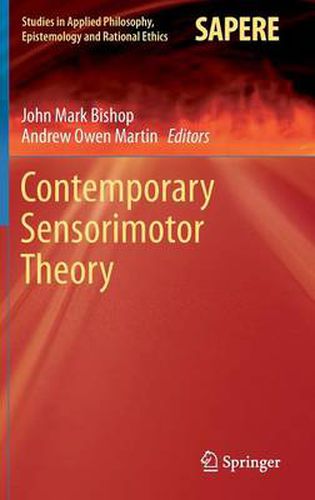Readings Newsletter
Become a Readings Member to make your shopping experience even easier.
Sign in or sign up for free!
You’re not far away from qualifying for FREE standard shipping within Australia
You’ve qualified for FREE standard shipping within Australia
The cart is loading…






This title is printed to order. This book may have been self-published. If so, we cannot guarantee the quality of the content. In the main most books will have gone through the editing process however some may not. We therefore suggest that you be aware of this before ordering this book. If in doubt check either the author or publisher’s details as we are unable to accept any returns unless they are faulty. Please contact us if you have any questions.
This book analyzes the philosophical foundations of sensorimotor theory and discusses the most recent applications of sensorimotor theory to human computer interaction, child’s play, virtual reality, robotics, and linguistics.
Why does a circle look curved and not angular? Why does red not sound like a bell? Why, as I interact with the world, is there something it is like to be me? An analytic philosopher might suggest: “"if we ponder the concept of circle we find that it is the essence of a circle to be round”. However, where does this definition come from? Was it set in stone by the Gods, in other words by divine arbiters of circleness, redness and consciousness? Particularly, with regard to visual consciousness, a first attempt to explain why our conscious experience of the world appears as it does has been attributed to Kevin O'Regan and Alva Noe, who published their sensorimotor account of vision and visual consciousness in 2001.
Starting with a chapter by Kevin O'Regan, Contemporary Sensorimotor Theory continues by presenting fifteen additional essays on as many developments achieved in recent years in this field. It provides readers with a critical review of the sensorimotor theory and in so doing introduces them to a radically new enactive approach in cognitive science.
$9.00 standard shipping within Australia
FREE standard shipping within Australia for orders over $100.00
Express & International shipping calculated at checkout
This title is printed to order. This book may have been self-published. If so, we cannot guarantee the quality of the content. In the main most books will have gone through the editing process however some may not. We therefore suggest that you be aware of this before ordering this book. If in doubt check either the author or publisher’s details as we are unable to accept any returns unless they are faulty. Please contact us if you have any questions.
This book analyzes the philosophical foundations of sensorimotor theory and discusses the most recent applications of sensorimotor theory to human computer interaction, child’s play, virtual reality, robotics, and linguistics.
Why does a circle look curved and not angular? Why does red not sound like a bell? Why, as I interact with the world, is there something it is like to be me? An analytic philosopher might suggest: “"if we ponder the concept of circle we find that it is the essence of a circle to be round”. However, where does this definition come from? Was it set in stone by the Gods, in other words by divine arbiters of circleness, redness and consciousness? Particularly, with regard to visual consciousness, a first attempt to explain why our conscious experience of the world appears as it does has been attributed to Kevin O'Regan and Alva Noe, who published their sensorimotor account of vision and visual consciousness in 2001.
Starting with a chapter by Kevin O'Regan, Contemporary Sensorimotor Theory continues by presenting fifteen additional essays on as many developments achieved in recent years in this field. It provides readers with a critical review of the sensorimotor theory and in so doing introduces them to a radically new enactive approach in cognitive science.